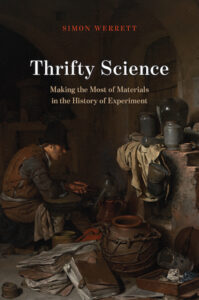 What with all the talk these days of “citizen science,” as opposed to those activities engaged in by profesionals in formal research facilities, one can be forgiven for not immediately calling to mind a time when almost all science was the purview of amateur experimenters making investigations of the things closest to their daily lives through the use of items they had ready-to-hand.
What with all the talk these days of “citizen science,” as opposed to those activities engaged in by profesionals in formal research facilities, one can be forgiven for not immediately calling to mind a time when almost all science was the purview of amateur experimenters making investigations of the things closest to their daily lives through the use of items they had ready-to-hand.
Back in the seventeenth and eighteenth centuries, curious individuals were engaging in researches “ranging from esoteric investigations of glowworms and sour beer to famous experiments such as Benjamin Franklin’s use of a kite to show lightning was electrical and Isaac Newton’s investigations of color using prisms” all driven by the prevailing values of the day: recycle, repair, repurpose, and reuse (plus ça change…).
Simon Werrett explains how it all worked, and what was discovered as a result, in his new Thrifty Science; Making the Most of Materials in the History of Experiment from University of Chicago Press, a book that should be of great interest to all who enjoy learning more about the history of science as well as the origins of some key ideas in what today we often refer to as sustainability.
